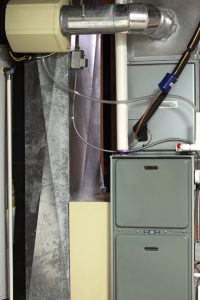 We want to start this blog with an assurance: gas furnaces are not inherently dangerous appliances. They’re found in millions of homes across the country, dutifully keeping families warm. Provided they receive regular maintenance and professional repairs as necessary, they can run at high degrees of safety throughout their service lives.
We want to start this blog with an assurance: gas furnaces are not inherently dangerous appliances. They’re found in millions of homes across the country, dutifully keeping families warm. Provided they receive regular maintenance and professional repairs as necessary, they can run at high degrees of safety throughout their service lives.
Still, burning natural gas does carry risks, such as exposure to toxic gases like carbon monoxide and the hazard of explosions and fires. We’re going to examine some of the ways your gas furnace may develop safety problems to help you better understand how to prevent them. Our technicians are ready to assist you whenever you need furnace repair in Mason, OH, or if you need to replace an older furnace that’s no longer safe.
Flooded combustion gas chamber
One of the key safety features in a modern gas furnace is the flame sensor. It detects if the gas coming from the burners has ignited and shuts off the gas flow if it hasn’t. This is designed to prevent the danger of unburned gas flooding into the combustion chamber because of a delay with the electronic ignition system. If this built-up gas suddenly ignites, it will cause a large and potentially hazardous explosion. If you begin to hear a “boom” sound from your furnace when it comes on, there may be delayed ignition, so call for repairs before the situation worsens.
Cracked heat exchanger
This is a problem that can occur in older furnaces, and it’s one of the reasons we recommend replacing a furnace that is more than 15 years old. The heat exchanger contains the hot combustion gas from the burners and transfers heat through the exchanger walls to the air, after which the combustion gas byproducts are vented out through a flue. The stress of age or the presence of corrosion on the heat exchanger can lead to cracks. These cracks can stretch open wide enough when the exchanger is hot to allow the combustion gases to escape and enter the air being sent to the house—a dangerous situation because of the presence of carbon monoxide. Regular maintenance helps catch these cracks, and you also need to have CO detectors in your house as an early warning.
Blocked vent pipe
We mentioned in the last section that the exhaust gases from the furnace escape through a flue that vents them outside the house. If this vent pipe becomes blocked, it will cause the combustion gases to move back into the furnace to start circulating with the air inside the house. You may have a partially blocked vent pipe, which will lead to a small but still potentially harmful increase in CO levels. A fully blocked vent pipe is more immediately dangerous. Regular maintenance cleans the flue to help prevent this, and technicians can clean a vent pipe that’s become blocked. Pay attention to any increase in CO levels, as this may be warning you of the problem.
You can rely on our expert team for furnace repair service—we have 24-hour emergency service available.
Call Bartels Heating & Cooling “For a Comfortable Way of Life”!
